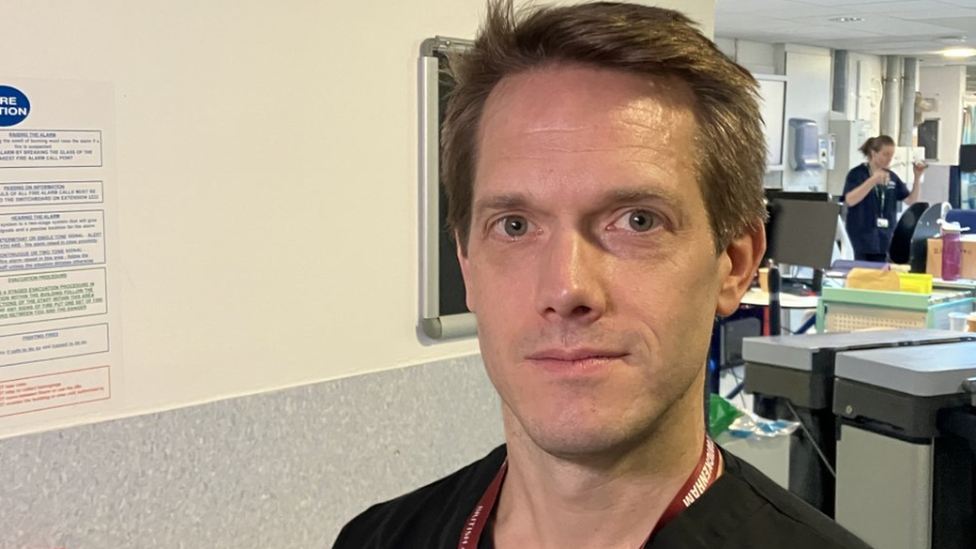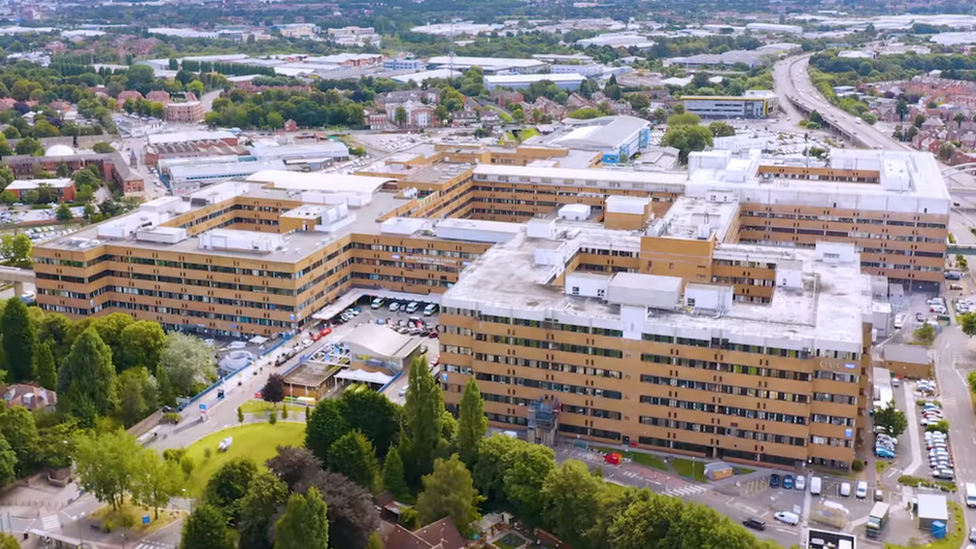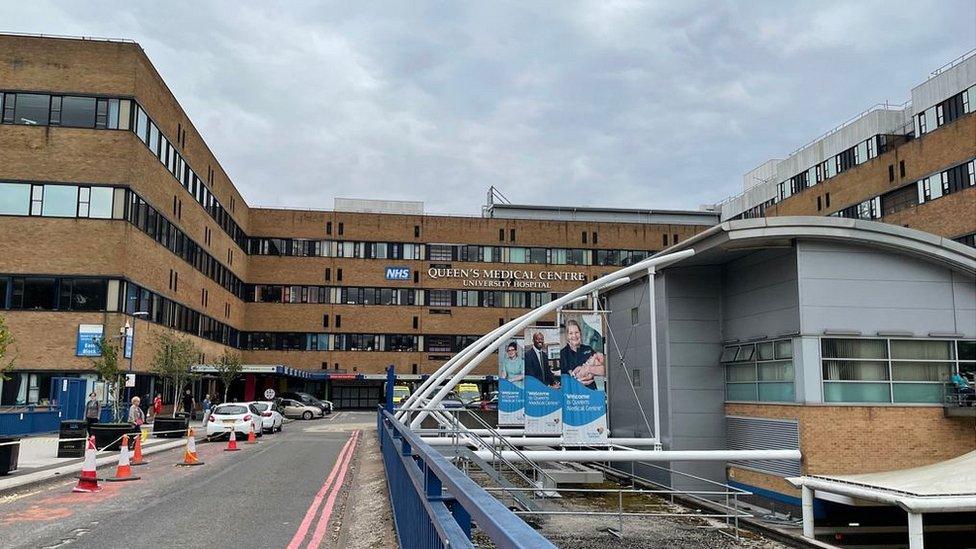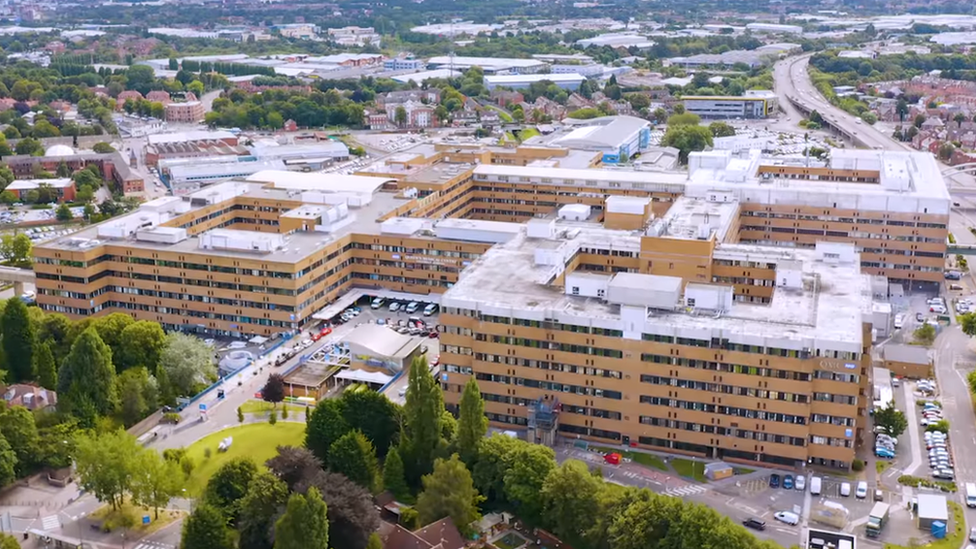Queen's Medical Centre: Patients line corridors as winter pressure rises
- Published

Patients on trollies lined hospital corridors on Monday morning when 57 people were waiting for a bed
Medics at Nottingham's Queen's Medical Centre (QMC) have warned its A&E unit is under "extreme pressure" this winter.
The hospital's emergency department was designed to have capacity for 350 patients, but doctors said it now often treated 650 people daily.
Patients have faced waits of up to 42 hours for treatment this week, staff said.
And they have warned the situation will worsen as winter continues.

A&E consultant Dr David Shearn said the department was facing its worst winter ever
Nottingham University Hospitals (NUH) NHS Trust has urged people to only use the emergency department if they really need to.
Dr David Shearn, a consultant in emergency medicine, said 57 patients were waiting for a hospital bed on Monday morning with people being kept on trollies in corridors.
He said: "It's typical for a Monday morning after a busy weekend. The emergency department is currently over capacity.
"It shocks us as well. It is not something we like or want as a department, but it is something that has become quite common this winter.
"This winter is already the worst winter we have had."
A&E charge nurse Daniel Smith said: "It is extremely difficult at the moment. We face unprecedented pressures in the department.
"Coming into these winter months, we expect them only to increase as we go on."
He added: "All the staff here are facing extreme pressures and we are not able to fully give the high level of care we come into this profession to give."

A special discharge ward has opened at the QMC to reduce pressure on beds
The trust's acting chief operating officer, Duane McLean, said: "Sadly, this is an issue that is regular for hospitals over the winter.
"Clearly it is not a position that we would want to see.
"We are very grateful and thankful for all the work our staff do in caring for our patients."
He said there was a limit on the number of patients who could be safely taken into the emergency department.
"I am afraid, on occasions, those limits are breached and we have to think of different ways to care for those patients," he said. "Our teams are currently looking for movement of patients."
A special discharge ward with 20 beds and 20 chairs is among the measures the QMC has taken to reduce the pressure on A&E.

When should I go to A&E?
The NHS advises patients to use A&E only if they are seriously injured or facing life-threatening emergencies, external, such as signs of a heart attack or stroke, choking, breathing difficulties, a seizure or heavy bleeding.
It says many people attend A&E with conditions that could be dealt with in urgent treatment centres. , external
Patients who are unsure what to do are urged to contact the NHS 111 service, either by phone or online, external to seek advice.

Follow BBC East Midlands on Facebook, external, on X, external, or on Instagram, external. Send your story ideas to eastmidsnews@bbc.co.uk, external.
Related topics
- Published31 October 2023

- Published3 January 2023

- Published6 January 2023
